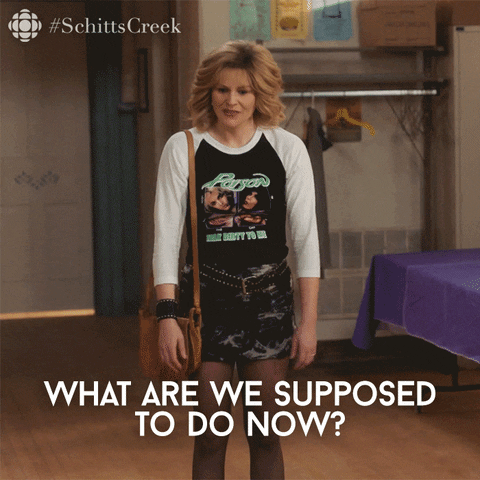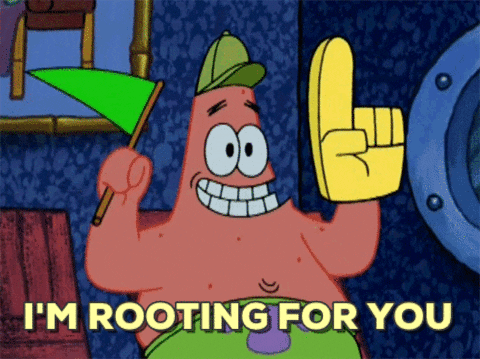First things first—CONGRATULATIONS!!! You wrote a book, whether it’s a skeleton draft or a fully fleshed out 100k+ word first draft, take some time to celebrate this phenomenal achievement! While I can’t say “the hardest part is over”, finishing a draft is no small feat and you deserve a pat on the back, a glass of champagne, a big slice of chocolate cake, or whatever you want because you deserve it.
Now, celebrations aside, no book is a perfect first draft—you likely can’t go straight from your brain to the page to publication, so this post is going to break down the steps I follow after I finish a draft. I’m sure this goes without saying, but on the off-chance it doesn’t – this is the process that works for me but may not work for you, and that’s ok! Treat this post the same way I treat craft book: take what serves you & leave the rest.
- Take a break. Seriously, I mean it. And not a week long refresher, take a goooood break. You’ve just spent potentially weeks/months/years living in this story world. The best way to objectively review what you’ve created and to understand what changes need to be made, is to approach your work with a fresh set of eyes. I know that this is hard. You’re feeling so much momentum and you absolutely love the world you’ve existed in, but trust me. When I completed my first draft, I took a little less than two weeks away from it and…it was not enough. About two months into my next pass I hit the burnout wall HARD. Avoid this if you can, give your brain and your creativity room to breathe. Let the manuscript sit for a minimum of four weeks if you can. During that time you can brainstorm ideas if you want, but ideally you’d spend that time refilling your creative well however works for you. For some it’s watching copious amounts of tv and movies, for others it’s devouring the books on their TBR list. Do whatever you need to before even thinking about looking at that manuscript again. When you feel like you’ve “forgotten” enough of your plot/characters/world, then get yourself a fresh notebook, a set of color coded pens, some post-it tabs, and jump to the next step!
- Writing is reading…and re-reading…and re-reading. For me personally, it’s easiest for me to approach my first read through with a physical version of my book. So I export it out of Scrivener and take it to my closest FedEx Kinkos to get it print and bound. A friend actually just told me about this site that will do it for cheaper and mail it to you, so if you don’t need the instant gratification of same-day printing, definitely try them out. Once I’ve got the bound copy, I sit down with multicolored pens, highlighters, and have a paint party! I choose a different color for different meanings. For my pens, usually it’s RED for cut, GREEN for reword, or BLUE for general notes. For my highlighters, usually its PINK for romance, YELLOW for world building, GREEN for character arcs, PURPLE for pacing, and ORANGE for stakes.I also keep a notebook on hand for more in-depth, big picture changes as well as little things that just need tightening up. Some ridiculous examples from my most recent first draft are: “This character is present in three chapters and then disappears for 90% of the book only to come back and save the day” or “Her mother’s name has changed three times” or “HOW COULD YOU POSSIBLY KILL THEM?!?!”. After each chapter, I make an overview list of all the things that need to be changed, fixed or cut in the notebook and move on to the next chapter. I also use the color-coded tabs to mark where big, potentially story-changing edits will need to be made that I’ll need to revisit later. In general, this is a slow process for me because I’m tackling this as a writer with a different perspective on what does and does not serve my story, so sometimes this can take me two weeks other times a month. But once I’m done, I have a nice stack of notes to go through and make myself an edit letter.
- Make a plan. While I’ve never had a professional editor provide me a formal edit letter, I make myself my own version of an edit letter. I use a combination of multiple resources I’ve come across through the years, but it boils down to me creating buckets for each round of revisions I plan to take and what I want to focus on within each round. Normally, I have buckets for changes corresponding to the highlighter colors I’ve used: World Building, Character Arcs, Magic Systems, Romance, Pacing, and Stakes. Using all the notes I made while reading my printed manuscript, I type up all of the comments and divide them into their corresponding sections.
- Tackle it piece by piece. I learned the hard way that trying to fix everything in one pass is…impossible. Instead, I do a revision pass for one bucket at a time, and usually start with the most in-depth, extensive edits first. Slowly but surely, I funnel my way down to the smallest bucket (usually the romance for me haha).
- Send it off to readers. It’s important to have trusted readers. Along the same lines as a critique partner, your beta and alpha readers will get a polished version of your manuscript and you’ll ask them to provide comments and an overall assessment. For me personally, I think it’s important to have a mix of writers and readers to provide a balanced playing field of feedback that you can sift through. Writers might look at it with a more critical lens, while readers are just looking to get swept up in the story. Previously, I’ve sent out a google form to people who’ve requested to read for me. In it I ask what their rough turn around time for feedback would be, whether or not they have any concerns reading a book with any subject matter or content warnings my manuscript might have (depression, anxiety, intrusive thoughts, etc.), as well as legal language ensuring that they won’t steal my work because you can never be too careful
- Receive feedback. A good portion of writing hinges on your ability to receive criticisms and feedback, both constructive or not. This is harder than it sounds…trust me. Our stories are our children, it’s very difficult to not take any feedback personally, but remember than your story and the path to publish you’re trying to journey down will be riddled with opinions. Some good and some bad. However, just like this post, with all things you should take what serves you and leave the rest, but you must leave your ego out of it! My advice for receiving feedback is to try to put yourself in the shoes of the person giving it. If you’re unable to see the merit of their feedback, then you don’t have to do anything with it. But if you do, make note of it and think about different ways to tackle it in your next round of revisions.
- Start again from the top. After you’ve gone through and processed the feedback, time for another read through, another edit letter, and another round of revisions. For some writers it takes 3 drafts, for others it takes 13 or 30. The story will take however many rounds it needs until you feel like polished to where you want it before pursuing the next step!


